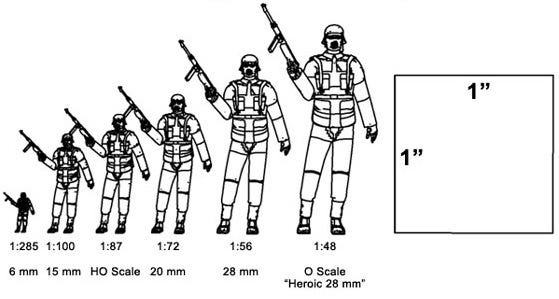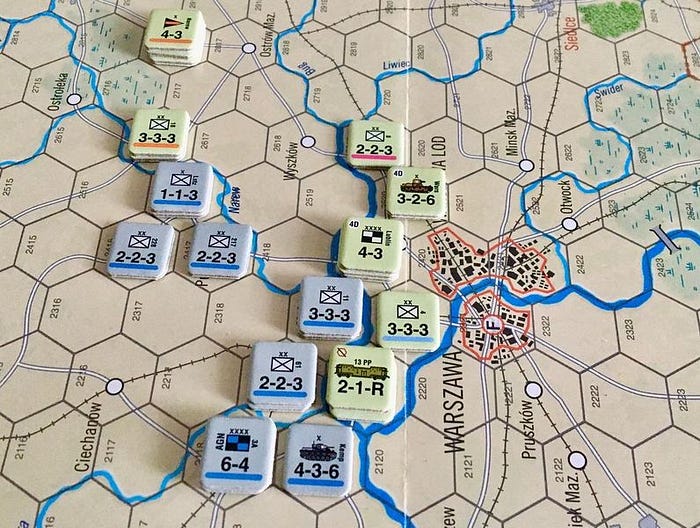Classification of Tabletop Wargames
Wargaming is my favourite analogue hobby. It combines several disciplines, connects you with communities and you learn a lot about tactics, history, and the Zeitgeist of the particular era while painting miniatures, re-enacting famous battles, and understanding the rules that try to represent the methods of warfare as well as possible. In this article, I am talking about historical wargaming, as you might have guessed by now. Don’t get me wrong, I do like Warhammer, Kings of War, Infinity, Malifaux, and all that other fantasy/sci-fi jazz but it has less appeal to me when it comes to getting down to the nitty-gritty and talking about what kind of models and rulesets are best for what type of engagement.
“Historical wargames set during the 2nd World War are my favourite due to their variety in weaponry, battle scales, and tactics deployed.”
In this first article about wargaming, I will talk about one of the most popular eras for tabletop wargaming: the 2nd World War. This era has a lot to offer. Apart from the fact that WW2 and its consequences are still very apparent in our world today, it is especially interesting because of the modern weaponry, advanced squad tactics, the use of combined arms and the involvement of many armies on a large scale. I will not touch on very popular and widely commercialized systems like Bolt Action, Flames of War, and Battlegroup as they do not qualify as historical wargames. They are just Warhammer or Star Wars X-Wing with WW2 figures. My focus is on more obscure or less prevalent rulesets like Command Decision, Spearhead, and Chain of Command. Actually, this already is the first distinction I want to make: popular/commercialized/a-historical systems and what I would call “expert”-systems (usually less popular/commercialized with an emphasis on historical accuracy). I won’t talk about the history of wargaming though. Many articles have described how the Prussian “Kriegsspiel” developed into what wargaming is about today and you can read more about all that on Wikipedia: https://en.wikipedia.org/wiki/Kriegsspiel

Scales and sizes used in tabletop wargaming
So apart from the historical era, what distinctions are made today? The most obvious one is the size and scale of the miniatures. What may be confusing is that some manufacturers label their figurines in millimetres (6mm, 10mm, 20mm, 25mm, …) other in relative scale (1:285 or 1/285, 1:144, …) and again others by the nomenclature used in the model train hobby (N, H0, …) — you get the idea. Following, a table I made to give you a first overview of how all these relate to each other:

As you can see, the different designations of scale are not directly translatable into their counterparts. The discrepancies mostly arise from their different backgrounds. Scales designated in millimetres usually come from producers that manufacture figures/humanoids. The size in millimetres measures the figure from its feet up to the height of its eyes or helmet. Also, the figures can vary from producer to producer: a 10mm Pendraken miniature might look taller than an equivalent from Plastic Soldiers Company. Relative scales are mostly found with Revell, Italeri, and other companies that mainly produce vehicles and planes. There, the proportions of all parts of the vehicle are crucial for the realistic depiction. Every small part of the model will be downscaled using the relative scaling method. Model train companies aimed to represent buildings, terrain, man-made structures like bridges and tunnel and, well, trains. This scale grew historically and is therefore based on inherited assumptions which I won’t go into further detail about in this article.
Different rulesets for different battle scales and command levels
In my opinion, the most crucial distinction to make is the size of the battle to represent, respectively the level of command at which the players want to play. Let me give you a quick overview of some of the implications and intricacies to make it clearer: if you are a squad or platoon commander, you will have to deal with every single soldier on the battlefield. A normal wargaming table with the size of 6'x4' will accommodate 2–3 squads à 10 soldiers with their commander and some support units. Each unit will receive its commands directly from you and you will move every unit separately. They are also based individually, meaning that each miniature has its own little plastic base. This is called a skirmish game and only focusses on tactics used by relatively small forces (up to one or two platoons at max).
“I enjoy commanding several battalions, perhaps even divisions. That way I don’t have to deal with every single soldier and can concentrate on problems revolving around command & control.”
On the other end of the spectrum, you can take the role of a general or even field marshal commanding entire armies or corps. The individual soldier won’t play a role in that case. You will be occupied with the strategic implications of your decisions and operational challenges your division face when advancing into foreign territory. Between those two extremes, there is a range of rulesets and systems that cover all kinds of perspective. I won’t dig into all the aspects of every perspective but rather give you a, to the extent of my knowledge, holistic overview of the different perspectives, their perspectives and scales used. Below you’ll find a chart for your orientation so that you can quickly reference the units sizes and command levels that I’ll refer to:

As so often, the chart above doesn’t paint the whole picture. During the 2nd World War, the Soviet forces thought in Regiments rather than Battalions as units of manoeuvre on an operational scale. That was largely due to the sheer number of soldiers deployed by the USSR. This is just an illustrative example of how different countries, eras, and commanders decided how to structure their forces. Those considerations and the formations of forces, as a result, is widely known as “Order of Battle”. You will read that term many times when learning rules and re-enacting battles of all periods. The order of battle will tell you (mostly written in lists or hierarchical schematics) which units fought, how many they were, and by whom they were commanded. This is very important though complicated. Do not dismiss this detail, especially when playing wargames above the skirmish level. The Order of Battle has implications on the efficacy and efficiency of command, the ability to control areas, and the aptitude of your army to organize and manage supply.
“The Order of Battle is the heart of every operation. It tells you everything about the forces deployed and is key to the historical re-enactment of military engagements.”
So what’s the Big Picture?
When we talk about tabletop wargames people often only refer to miniature wargames. Wargames on a truly operational scale are hard to re-enact with miniatures. The sheer size of the table would either render the miniatures invisible or the table too big for any room to be practical. Additionally, using miniatures for operational level games is useless. Apart from the aesthetics that miniatures provide (and I would argue that is their main purpose in light of being a hobby), their purpose is to give an accurate impression of scale and size and, also very important, to determine the lines of sight when in active combat. But that is another detail that will be understandable once you get into reading the rules.

Getting back to wargames on an operational scale and up: on a command level where whole divisions or corps are the basic units wargaming-systems mostly use hex-gridded maps. Why hexes instead of other geometrical shapes are used is a whole different discussion and touches on the Euclidean tesselation of regular polygons. Very interesting, if you want to read up on that, just google “wargames and hex alternatives”. On an even higher level (truly strategic level) hexes would become meaningless in displaying areas of interest. Board games that simulate warfare on a global scale area-movement is used. You have probably seen boards like this before: e.g. Germany is divided into two parts and Russia into four, etc. — just like in “Risk”, the famous strategy game (which is, essentially, a strategic level wargame).

Before I come to the end of this article with an extensive list of resources, rulesets and systems, miniature manufacturers, and additional information I want to give you some background on the table above. You will see that I have divided the command levels into three columns. That’s because people don’t refer to the same thing when they talk of “battalion level” rules. Some mean, that the player commands one or more battalions. Others mean that the player manoeuvres battalions as single units on the table and the next one thinks, that every stand represents a battalion. There doesn’t seem to be an agreement on this, that’s why I made the level of command and manoeuvre very clear in this table. In the second column to the left, you will see that I have distinguished between operational-tactical, grand-tactical, and tactical wargames. The blue block is often just referred to as “Grand-Tactical” or “Operational”. This does the rules contained in this block no justice. Spearhead, for example, aims to go much further into the intricacies of commanding large scale battles than let’s say Blitzkrieg Commander IV. Steven Balagan has written a lot about those differences on his blog. I definitely recommend reading it: https://balagan.info/what-wargaming-rules-to-use-for-the-operational-level-of-war
So that’s it for now. As promised, I’ll fill in concrete info in this list below. Please drop me a comment if you like to start a discussion with me. I am happy to get into the topic with you guys.
List of external resources, producers, rulesets, and additional information (updated continuously)
Rulesets & systems:
- Bolt Action (skirmish, 28mm, non-historical, very popular)
- Flames of War (tactical, 15mm, non-historical, very popular)
- Battlegroup: WW2 (tactical, 15mm, a-bit-more-historical, very popular)
- Command Decision: Test of Battle (grand-tactical, 10–15mm, historical, popular)
- Spearhead (operational, 6–10mm, historical, popular)
- Blitzkrieg Commander IV (tactical, 15–20mm, historical, popular)
- Kampfgruppe Commander III (grand-tactical, 10mm, historical, not-so-popular)
- Chain of Command (skirmish, 20–28mm, historical, very popular)
- O’ Group (tactical, 10–15mm, historical, newly released)
- Axis & Allies (grand-strategic, figurines, a-bit-more-historical, very popular)
Miniature manufacturers:
Forums & communities:
Historical resources on wargaming:
Other information:
